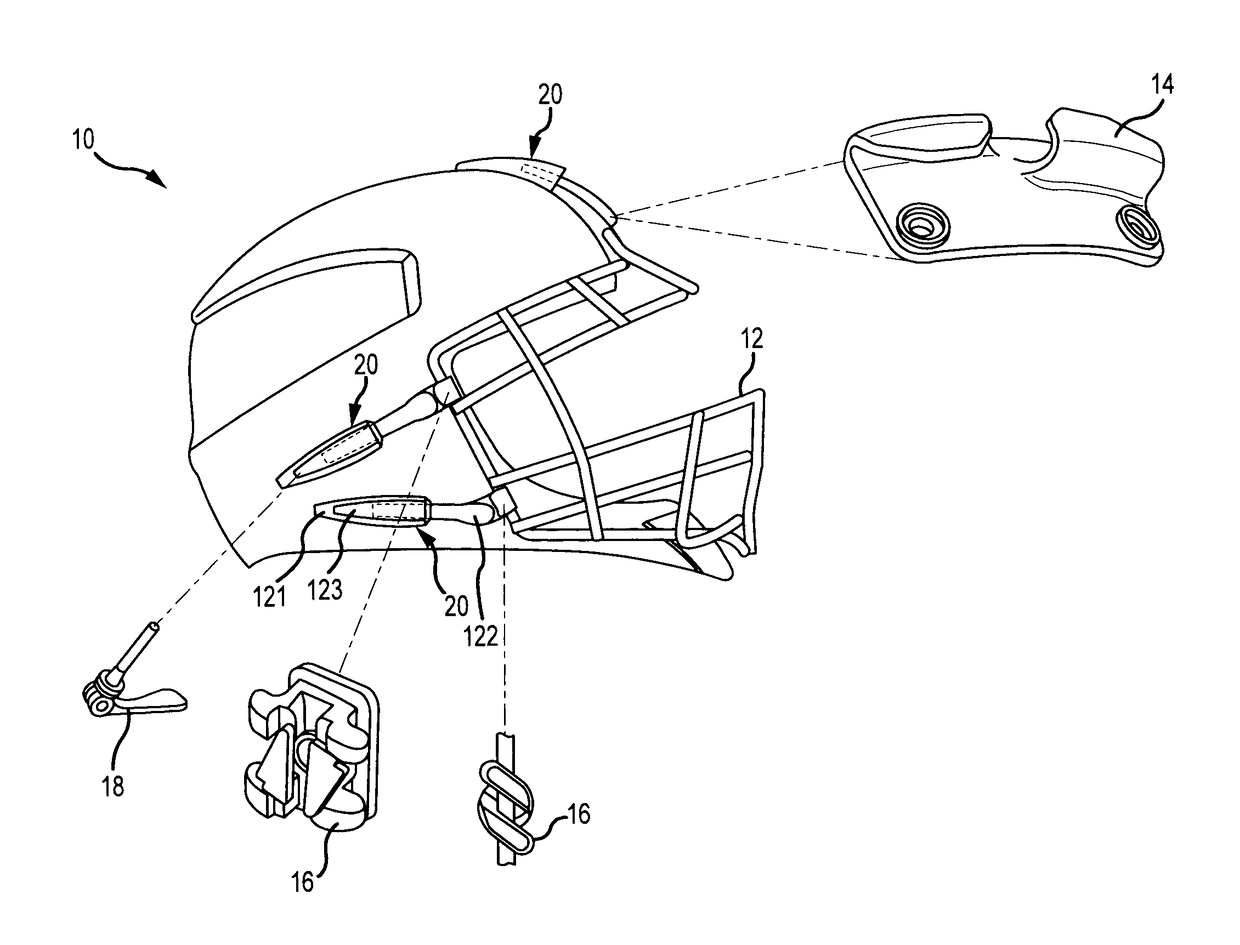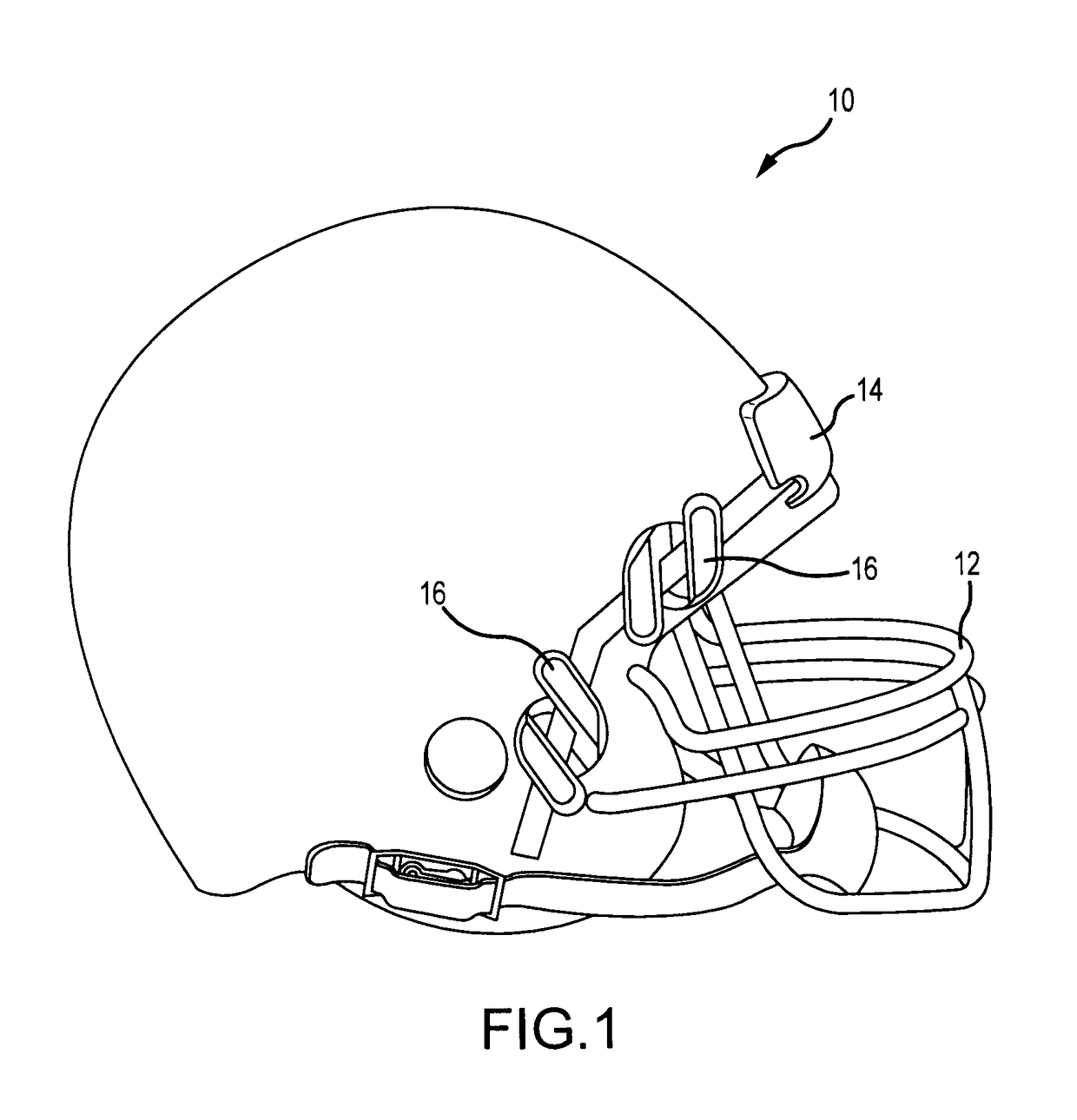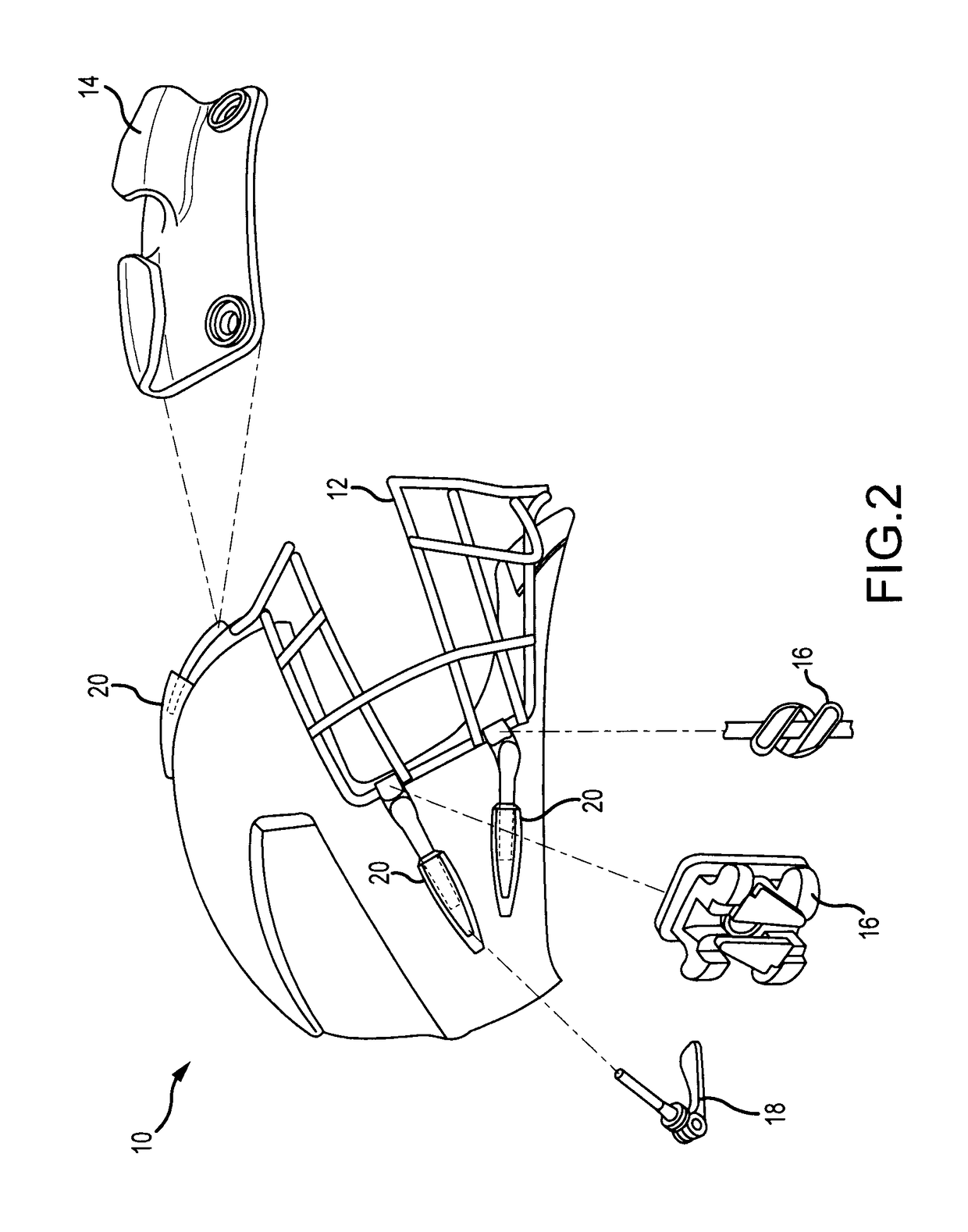Helmet for reducing concussive forces during collision and facilitating rapid facemask removal
a technology for reducing concussion forces and helmets, which is applied in the field of helmets, can solve the problems of lifelong neurological consequences, thousands of lawsuits and congressional hearings, and difficult recovery for parents and families, and achieves the effects of lessening the potential for brain injury, reducing the impact, and facilitating rapid and effective fashion
- Summary
- Abstract
- Description
- Claims
- Application Information
AI Technical Summary
Benefits of technology
Problems solved by technology
Method used
Image
Examples
Embodiment Construction
[0078]In certain embodiments, one can select the materials employed to address desired impact forces encountered in a given sport activity. Thus, in addition to one or more springs of certain and predetermined strengths, plastic and rubber materials of particular construction, composition and amount can be used to provide the desired shock absorption abilities desired. In several embodiments, it is preferred not to employ springs as the shock absorbing elements 20, but to instead rely upon an elastomer to accomplish such function, as the reduction in weight, the avoidance of metal parts, etc. is sometimes desired. A combination of these reversibly compressible materials and elements can be employed to address impact and collision events such that damage to a person's head and brain are minimized.
[0079]Certain embodiments employ an integral surface of a helmet 10 that comprises an elastomeric cellular, foam material having an integral inner skin and an integral outer skin with physic...
PUM
 Login to View More
Login to View More Abstract
Description
Claims
Application Information
 Login to View More
Login to View More - R&D
- Intellectual Property
- Life Sciences
- Materials
- Tech Scout
- Unparalleled Data Quality
- Higher Quality Content
- 60% Fewer Hallucinations
Browse by: Latest US Patents, China's latest patents, Technical Efficacy Thesaurus, Application Domain, Technology Topic, Popular Technical Reports.
© 2025 PatSnap. All rights reserved.Legal|Privacy policy|Modern Slavery Act Transparency Statement|Sitemap|About US| Contact US: help@patsnap.com



